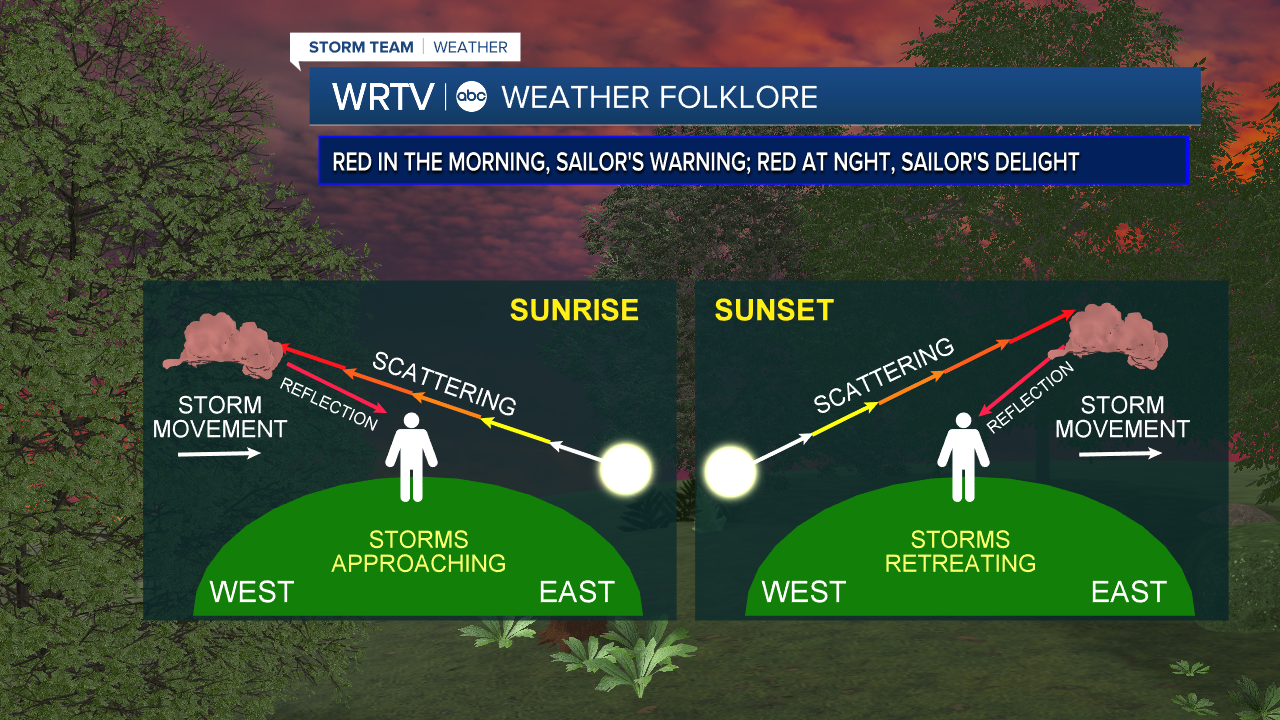From rainbows following the rain last weekend to stunning sunsets this week, Mother Nature has been putting on quite a colorful show lately.
So, what gives the sunset its variety of color to begin with?
A lot of the answer goes into the distance of the sun and the scattering of that sunlight. When the sun is rising or setting, the sunlight has farther to travel to reach your eyes. That greater distance means more blue and violet light gets scattered out by air and dust particles. This leaves mainly the brighter reds and oranges to fill our sunset skies.

One more reason for the vibrant colors we've seen lately though is actually linked to our cool may temperatures. Our highs have been below average since reaching 77 degrees on May 2nd.

Cooler air typically holds less moisture than warmer air. On warmer nights, water vapor in the air essentially places a filter on the sky. When temperatures are cooler we remove that filter, and the more vibrant colors can shine through.
Thunderstorms can also influence the colors we see in the sky.
You're probably familiar with the saying, "red in the morning, sailors take warning; red at night, sailor's delight". There is truth to this!

Storms generally move from west to east. In the morning, the rising sunlight from the east scatters and reflects off of these approaching storm clouds, giving the sky a reddish hue. In the evening, the setting sun in the west reflects off of departing storm clouds to our east, which also gives the sky a firey appearance.






